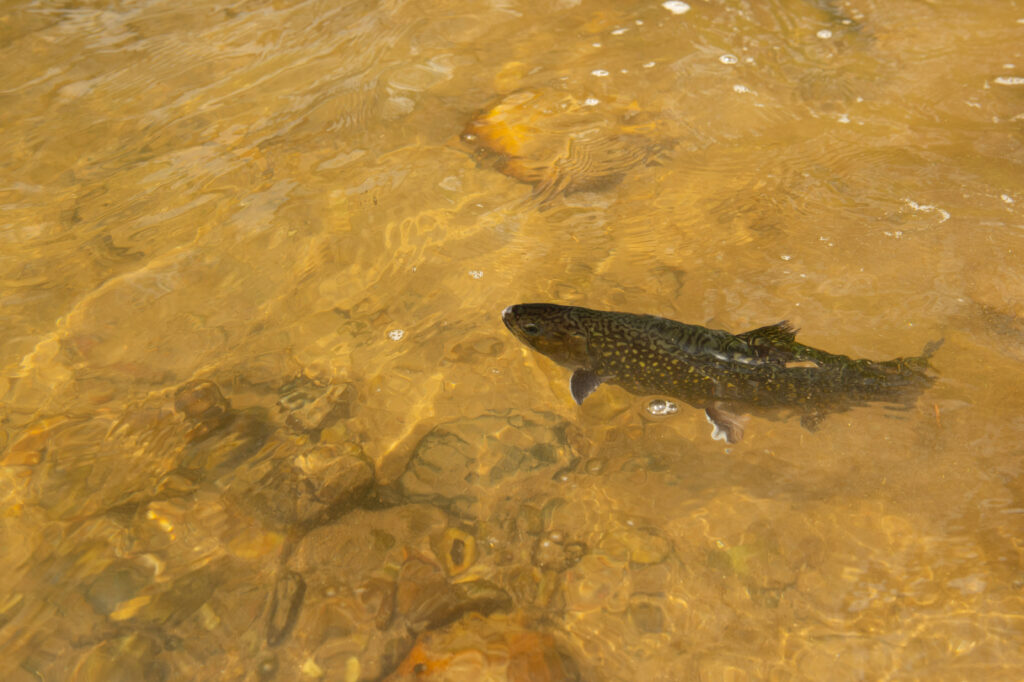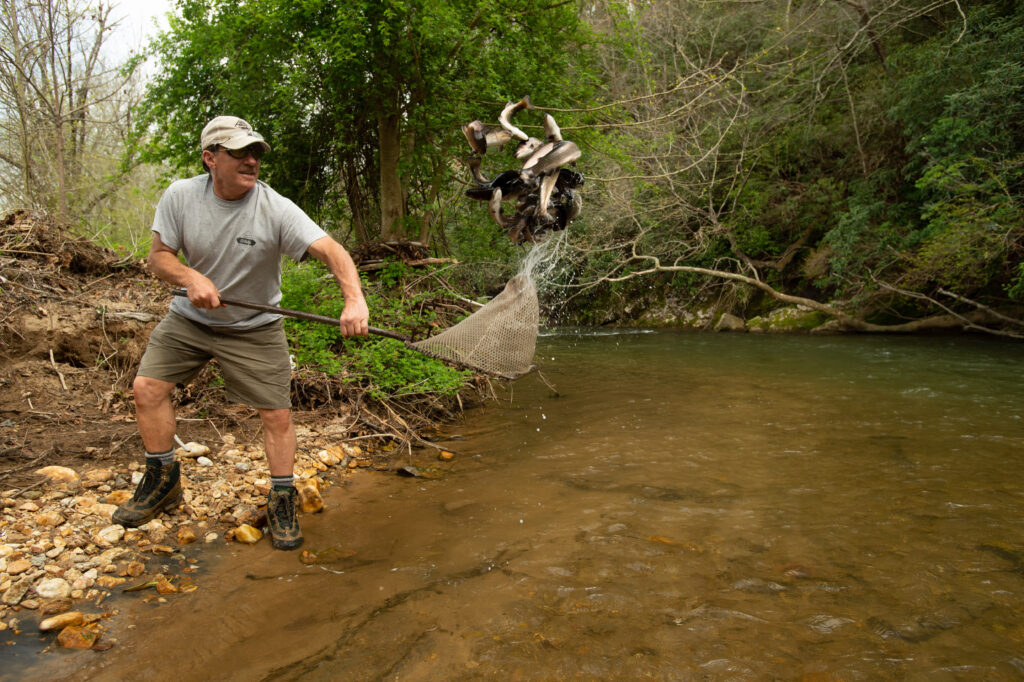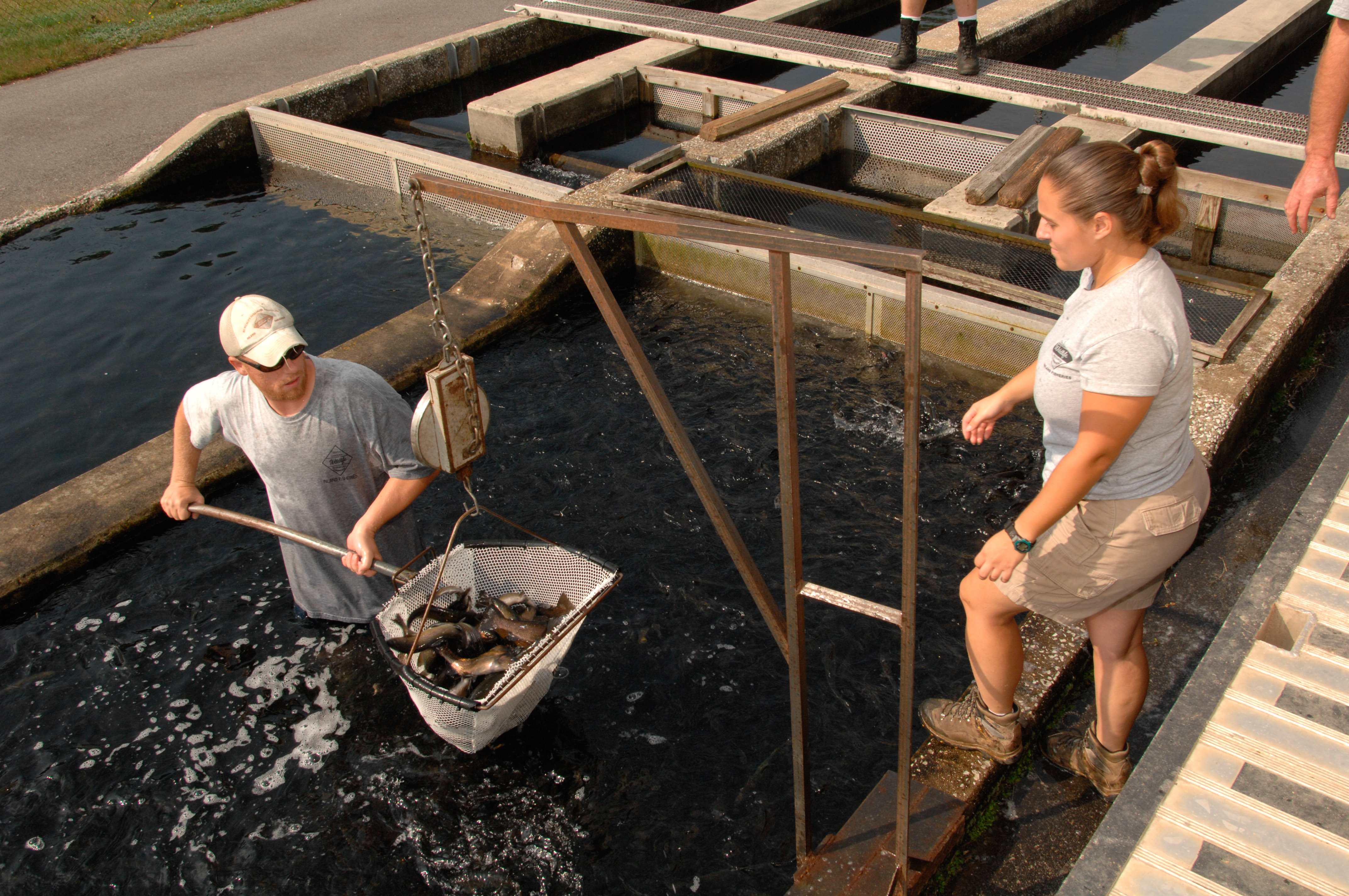Haywood County ranks in the top five most popular counties for trout fishing in North Carolina, which contributes $1.38 billion annually to the state’s economy, according to a comprehensive study that analyzed the economic impact of trout fishing.

The newly-released study was developed by the North Carolina Wildlife Resources Commission. It dives deep and analyzes everything from angler spending to emotional drivers of trout fishing, as well as threats to the fishing experience.
“We wanted to better understand how anglers utilize the trout waters we manage and the views of trout fishing from the anglers themselves,” said Jake Rash, cold water fisheries specialist with the Wildlife Commission.
Shannon Young, owner of Maggie Valley Fly Shop, sees first hand the popularity of fly fishing and its economic impact. Young is not surprised Haywood ranks so highly in the popularity of places to fish.
“Whether you’re in Waynesville or Maggie Valley, you have so many options to go fly fishing within an hour of either town,” Young said.
The number of people who’ve gone trout fishing in the course of a year has risen in recent years, according to the study. Young believes that could be attributed in part to COVID when people sought outdoor activities.

“After the pandemic there was massive growth. People got out there, started fly fishing and decided they probably love it,” said Young. “The Smoky Mountains is the number one most-traveled park in the world. So when people went through the pandemic and they had already done the rafting, the horseback riding, the hiking — they had fishing to try.”
Trout fishermen spend a total of $580 million on fishing trips in North Carolina annually — whether it’s a local stream down the road or a multi-day float trip. That monetary value includes costs like gas, restaurants, transportation and groceries.
Meanwhile, anglers spend $770 million annually on equipment, gear and supplies.
That comes as no surprise to Ed Saleem, a Haywood County trout fisherman and president of a local fly fishing club.
“Fly fishing is an expensive sport and people are spending tremendous amounts of money towards that, spending $400 or $500 for a day trip. Fly rods are up around $1,100 each now for the high end rods. I see that kind of money being spent,” said Saleem.
Why trout fishing?
Researchers also hoped to figure out what inspires, motivates and drives fishermen to spend time on the water — and open their wallets in the process. That in turn can help the Wildlife Commission protect the things anglers value most about the fishing experience.
“Given the recreational importance of trout fishing, it’s important to understand public perceptions,” said Doug Besler, Mountain Region Fisheries Supervisor with the Wildlife Commission. “These surveys put an economic value on the resources we manage and help us focus our programs and infrastructure.”
Here’s what fishermen said when asked why they fish:
- 26% fish for the sport
- 23% for relaxation
- 17% do it to be with family or friends
- 13% fish for trout to eat
- 12% like connecting with nature.
Young says he often comes across people who fish just to set their mind at peace.
“It gives you a chance to get away from the everyday lights. To take a break, enjoy nature and just set your mind at peace out on the river,” Young said.
However, the popularity of trout fishing can be a double-edged sword. Respondents were asked to describe how they felt their trout fishing experience has changed over the years. The most common changes were an increase in anglers, finding fewer trout, experiencing more crowding, and struggling with less access.
Half of all respondents said they had experienced overcrowding when fishing public mountain trout waters.
Safeguarding the resource
For Saleem, the allure of trout fishing in Western North Carolina began when he was still a college student at Western Carolina University in the 1970s.
“At that time, the water here was pretty awful. It ran black. There were very few controls on dumping into water,” Saleem said of industrial pollution back then.
But luckily that’s changed.
“The water now is some of the most pristine in the country, which gives us some of the best fishing. Some of our major rivers are well sought after by others, so they’ll come into this area,” said Saleem.
Pristine water goes hand in hand with viable trout habitat. And viable trout habitat is what attracts fly fishermen to some waterways over others.
According to the study, the top criteria trout fishermen use when deciding where to fish is how likely they are to catch a fish. Meanwhile, 70% of respondents said there isn’t enough trout in the rivers that they fish in. The availability of trout in the water was a recurring theme throughout the survey.
As the president of the Trout Unlimited Cataloochee Chapter, Saleem believes it’s his duty and the club’s duty to give back to the natural resources they enjoy so others can also enjoy them.
For example, members volunteer to help the Wildlife Commission stock trout in Haywood County waterways.

“Our club will go and help stock the West Fork of the Pigeon River. We literally put the fish in buckets and hike them out to the river and dump them in,” he said. “It’s rather a good affair. It’s rather fun.”
Saleem said that in the past few years Trout Unlimited has pivoted toward conservation as a major part of its mission, and has encouraged the local chapters across the country to do likewise.
“We’re designated to come up with conservation efforts within our district, within Haywood County,” he said. “So we will work with Haywood Waterways, for instance, and work with the National Park as well.”
Members have also aided with restoration projects, like eradicating invasive plant species along riverbanks to give native species the leg up.
“We remove non-native invasive species on the riverbanks as well as cleaning up the river and making a good environment for the trout,” Saleem said.
This makes a better environment for the trout by improving the habitat for their main source of food, invertebrates in the water.
Young also recognizes the importance of protecting the waterways.
“We have to protect our resource, that being water. That helps to keep the trout and the wildlife safe for our kids down the road,” said Young
No matter the economic benefit, Saleem and others recognize that the face of trout fishing is changing as Western North Carolina changes, gaining more retirees and tourists. Possibly in the next three years fishermen could be looking at an entirely different fishing scene. It all depends on the continual effort to preserve waterways and keep fish and fishermen happy.
This story was originally published by The Mountaineer.


